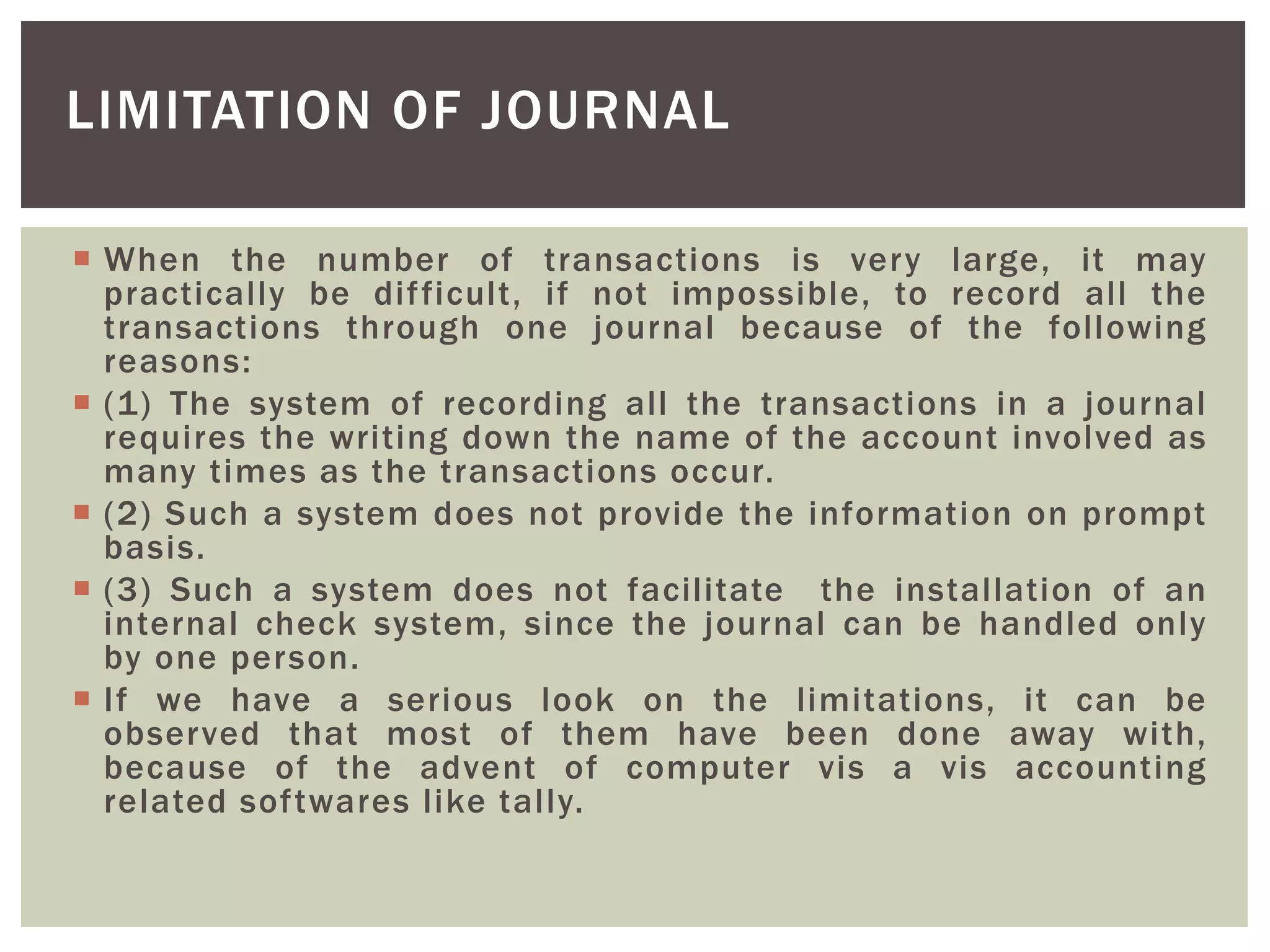The document outlines the accounting cycle, focusing on the roles of journals and ledgers in recording business transactions. It explains the processes of journalizing and posting, differentiates between journals and ledgers, and describes the trial balance as a tool for checking the arithmetic accuracy of accounts. Additionally, it highlights the limitations of both the journal and trial balance, particularly in relation to errors that may not be disclosed through these accounting records.




















